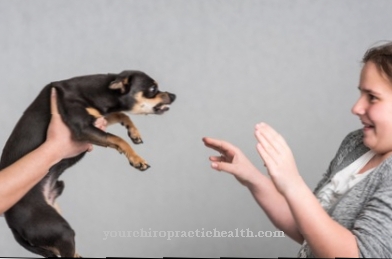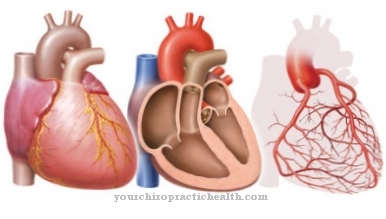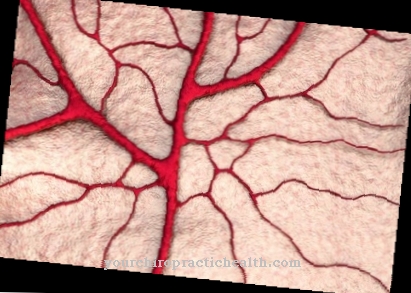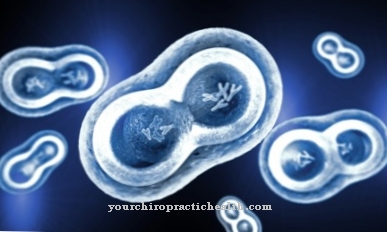The Stance phase is an important component of locomotion as part of the gait cycle. Impairments can significantly reduce the quality of life.
What is the stance phase?

A gait cycle consists of a stance and a swing leg phase of one leg. It begins and ends with the heel touching the floor. The standing leg phase represents the part in which the foot is in contact with the ground and the muscles propel the body forward.
In the gait analysis, it is divided into 5 sub-phases, the first and the last being very short and each representing the transition from or to the swing leg phase. These moments are also known as double load phases, since both feet are then in contact with the ground at the same time.
First of all, the heel reaches the ground without any weight load, followed by the transfer of the load when the sole of the foot makes contact with the ground. In the middle stance phase, the foot is almost below the body's center of gravity and the entire body weight acts on the leg. From this position, the body is transported further forward by stretching the hip joint in order to finally initiate the subsequent swing leg phase by lifting the heel.
At a normal walking pace, the calf muscles do the main work in propelling the body. Synchronous to the forward movement of the body, the foot rolls off.
Function & task
The standing leg phase is an important part of the forward movement and thus the mobility of a person. The propulsion of the entire body takes place in this period of time, while in the swing leg phase only the free leg is transported forward.
Different mechanisms are able to adapt the movement process to different needs and circumstances. At normal walking pace, the phases are timed so that the stress on the joints is kept as low as possible during the rolling process and vertical movements are minimized. Control via the knee joint is primarily responsible for this. In the phase of weight takeover, it is still bent significantly in order to be able to absorb the incoming load. The full extension is only achieved when the load is fully taken over.
An acceleration of the sequence of movements means that the first phase is increasingly skipped. The foot touches down in the middle and the weight is immediately taken on when it comes into contact with the ground. This is also due to the fact that there is a flight phase when running and when one foot lands the other leg is still completely in the air. Walking differs from this.
Faster locomotion also means that the calf muscles no longer do the main work for propulsion, but are increasingly supported by the hip extenders. This coupled activity of the two muscle groups is particularly strong when running up a mountain.
Functional differences arise in the course of movement depending on whether it is downhill or uphill. When going up, not the heel but the forefoot is put on first, while when going down the heel load is emphasized and this phase is extended. The weight is now transferred before the sole of the foot reaches the ground.
The timing of the movements of both legs and the correct coordination are particularly important for a round and rhythmic gait.
You can find your medication here
➔ Medicines for balance disorders and dizzinessIllnesses & ailments
All injuries and illnesses in the leg area that cause uncertainty or are accompanied by pain that intensifies when stepping on have a negative effect on the implementation of the standing leg phase. Essentially, the gait rhythm changes when one leg is affected. The pain or the aggravation of pain when taking on the load means that the contact time is kept as short as possible, the leg then leaves the ground again faster than normal. Compared to the unaffected leg, the standing leg phase is shortened and a limping gait occurs. Such gait changes can result from acute injuries such as strains, torn muscle fibers, meniscus lesions or fractures, but also from degenerative changes in the hip or knee joint.
Osteoarthritis in the hip joint in particular often shows typical changes in gait pattern that affect the standing leg phase. This includes the so-called waddling gait (Duchenne limp), in which the affected people incline their upper body towards the affected leg in the standing leg phase in order to reduce the load and avoid the pain. The other gait change in hip osteoarthritis is the so-called Trendelenburg sign. The muscles weakened by the gentle behavior can no longer hold the pelvis in the horizontal position in the standing leg phase and it tilts downwards. This creates an appearance that resembles an uncoordinated model walk.
Neurological disorders can affect the gait pattern as a whole and the standing leg phase in particular. Nerve lesions that paralyze the muscles responsible for taking on weight can result in insufficient strength being available. The optimal function of the quadriceps femoris muscle is particularly important, as this is responsible for the main part in keeping the body against gravity. If this muscle is completely or incompletely paralyzed, for example as a result of a herniated disc, a peripheral nerve lesion or a central neurological disease, the leg cannot or only briefly be stabilized in the standing leg phase. Similar mechanisms also arise in older people who suffer from general weakness of the muscles.
Hemiplegia as a result of a stroke often leads to a spastic gait pattern in which the processes of the standing leg phase are significantly changed. The foot is placed immediately with the forefoot with a complete knee extension. The sequence of movements is then changed coordinatively.













.jpg)

.jpg)
.jpg)











.jpg)